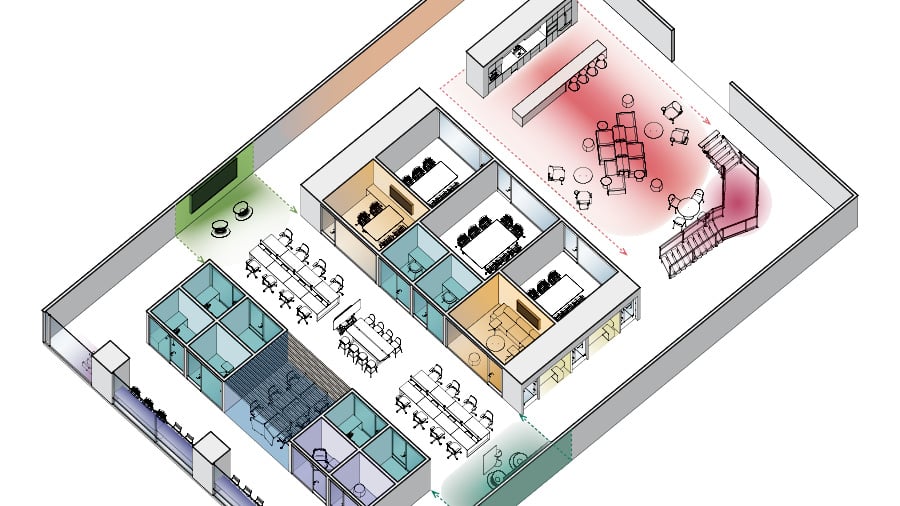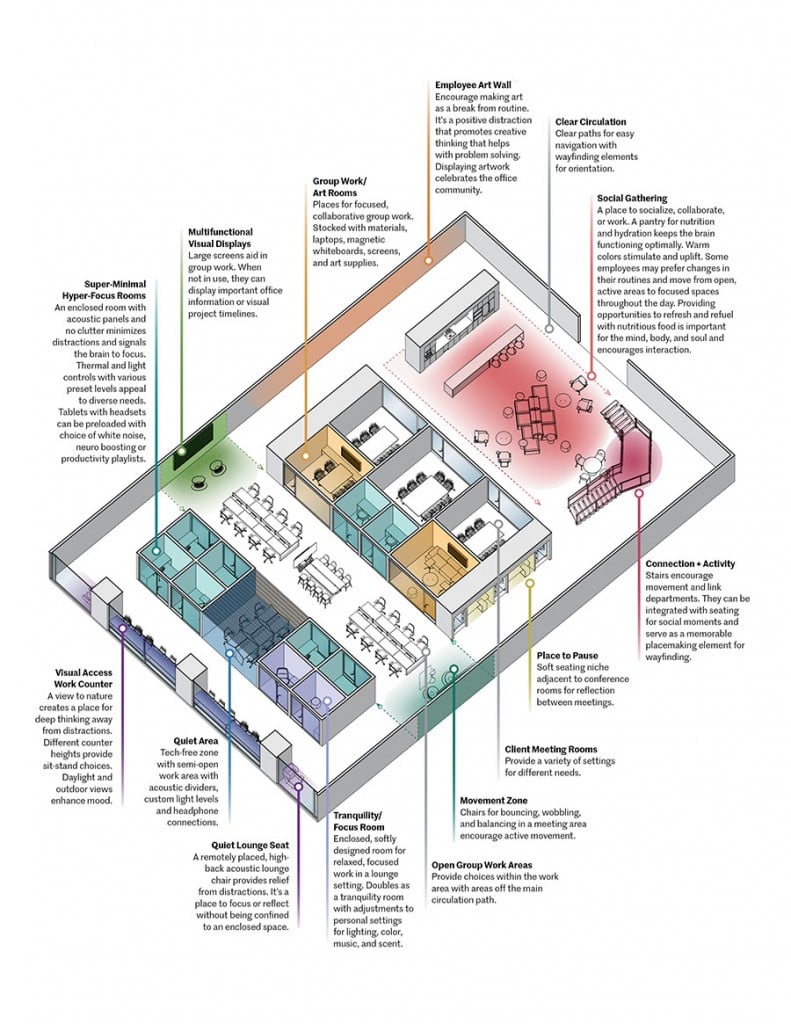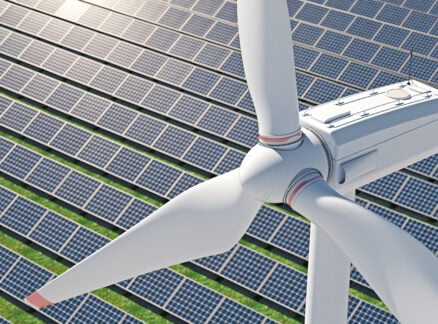
June 9, 2020
What Does a Neurodiverse Workplace Look Like?
Design of most offices doesn’t account for the estimated 50 percent of workers who aren’t neurotypical. HOK offers strategies for how to build more inclusively.
At any given point in time, about half the people in a workplace are probably not neurotypical—i.e., their brain function and behavior don’t fall within a range that experts consider typical. This could be for a variety of reasons, including conditions like autism spectrum disorder, events such as a traumatic brain injury, or mental health challenges such as depression and stress.
The HOK report “Designing a Neurodiverse Workplace” suggests a variety of design strategies for building a workplace that is more inclusive of these human conditions. This must go hand in hand with HR policies such as promoting a flexible work culture, permitting the use of noise-canceling headphones, and providing assistive software and technology for those who might need it. These measures can keep people engaged and satisfied with the workplace even as remote working becomes more widely accepted. As diversity and inclusion architect Toby Mildon says in the report, “If we design workplaces with different impairments, disabilities and conditions at the forefront of our thinking, we will make workplaces better for everybody.”
The graphic below from HOK suggests one potential setup for a neurodiverse workplace. For more on this topic, see “The Latest Workplace Design Initiative? Neurodiversity,” by Kay Sargent.
You may also enjoy “Emerging from a Public Health Crisis, Companies Get Set to Invest in Hygienic Office Design.”
Register here for Metropolis Webinars
Connect with experts and design leaders on the most important conversations of the day.
Recent Viewpoints
Viewpoints
Sustainability News Updates for Q2 2025






